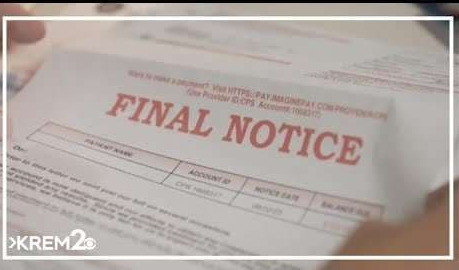
A sweeping change is about to impact millions of Americans who have fallen behind on their federal student loan payments. Beginning May 5, 2025, the U.S. Department of Education will resume involuntary collections on defaulted loans. This change follows a five-year pause initially enacted to ease financial strain during the COVID-19 pandemic.
{snip}
Many borrowers are unaware that defaulting on a federal student loan can also lead to long-term damage to credit scores, which in turn affects the ability to rent homes, secure car loans, or even get approved for certain jobs. For younger borrowers, these effects can delay major life milestones like buying a home or starting a family. The financial and emotional toll of default stretches far beyond missed payments. With the window for action rapidly closing, borrowers must act quickly to avoid these penalties.
The End of the Pandemic Pause and Why It Matters
In March 2020, the federal government halted student loan payments and collections as part of a pandemic relief effort. This break, introduced under former President Trump and extended under President Biden, gave borrowers breathing room. However, officials now say the relief has gone on long enough. They argue that restarting collections will help restore accountability and maintain the long-term stability of the federal loan system.
{snip}
Read More: Study Shows Students Learn Better When They Take Handwritten Notes
Legal Setbacks to Forgiveness and Biden’s Narrower Relief Efforts
President Biden has tried to ease the burden of student loan debt through widespread forgiveness. His plan to cancel up to $20,000 per borrower was blocked by the U.S. Supreme Court in 2023, which ruled the proposal required Congressional approval.
Still, Biden’s administration has made progress on smaller, targeted relief. Over 5 million borrowers have received forgiveness through programs focused on public service workers, income-driven repayment adjustments, and relief for those misled by for-profit schools. Even with these efforts, millions remain in default and are now subject to renewed collections.
{snip}
What Borrowers in Default Need to Know
Borrowers in default will begin receiving 30-day warning notices ahead of any collection action. These warnings are the last chance to avoid wage garnishments or lost benefits. Fortunately, options remain available, though they require swift action.
The Fresh Start initiative is a temporary program that helps borrowers exit default without needing an upfront payment. Once enrolled, participants regain access to financial aid, see the default removed from their credit history, and can apply for manageable repayment plans.
{snip}
Borrowers are encouraged to log in to StudentAid.gov to review their status, update contact information, and explore available programs. Staying informed is essential to avoiding financial disruptions.
A Turning Point in Student Loan Policy
The return of collections signals more than just the end of a temporary pause. It’s a pivotal moment in the national conversation about student loan debt. With over 43 million Americans holding a combined $1.6 trillion in federal loans, pressure is mounting for deeper, lasting reform.
Advocates argue that the current system is overly complicated, harsh, and in need of modernization. Many hope the return of collections will reignite efforts to pass meaningful legislation that makes repayment fairer and more sustainable. For now, though, the focus remains on immediate action. Defaulted borrowers still have a chance to protect their finances, but only if they act before the deadline hits.
{snip}
Don’t Wait to Take Control
If you are in default on a student loan, now is the time to act. With the clock ticking toward the May 5 restart date, borrowers must enroll in a relief program, consolidate loans, or begin a new repayment plan before collections begin. The federal government has tools available to help—but it’s up to each individual to use them.
This latest update in student loan policy will affect millions. For those who take the right steps now, it could also be the start of a financial recovery. Waiting could mean lost wages, withheld benefits, and even long-term damage to your credit. Don’t let this moment pass without taking action.
* Original Article:
Major Student Loan Update Could Change Everything for 5 Million Borrowers in Default